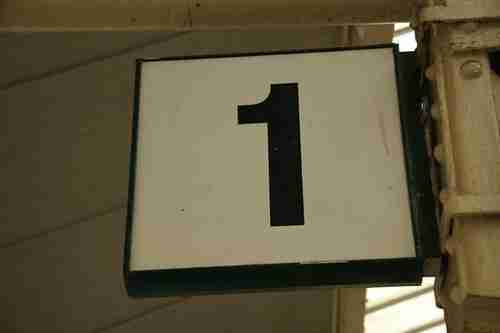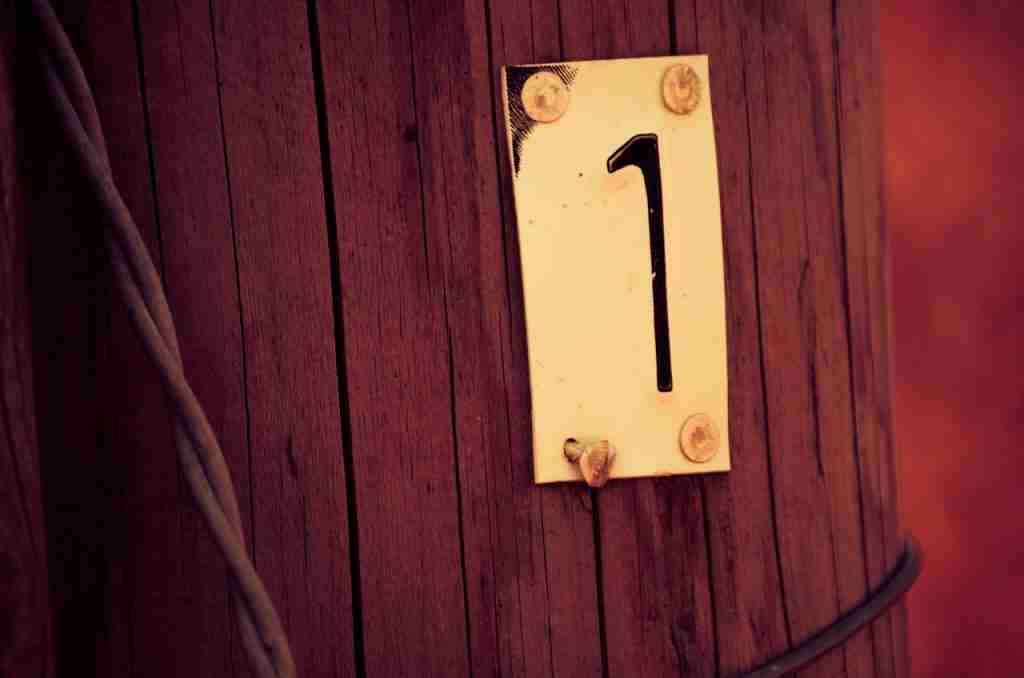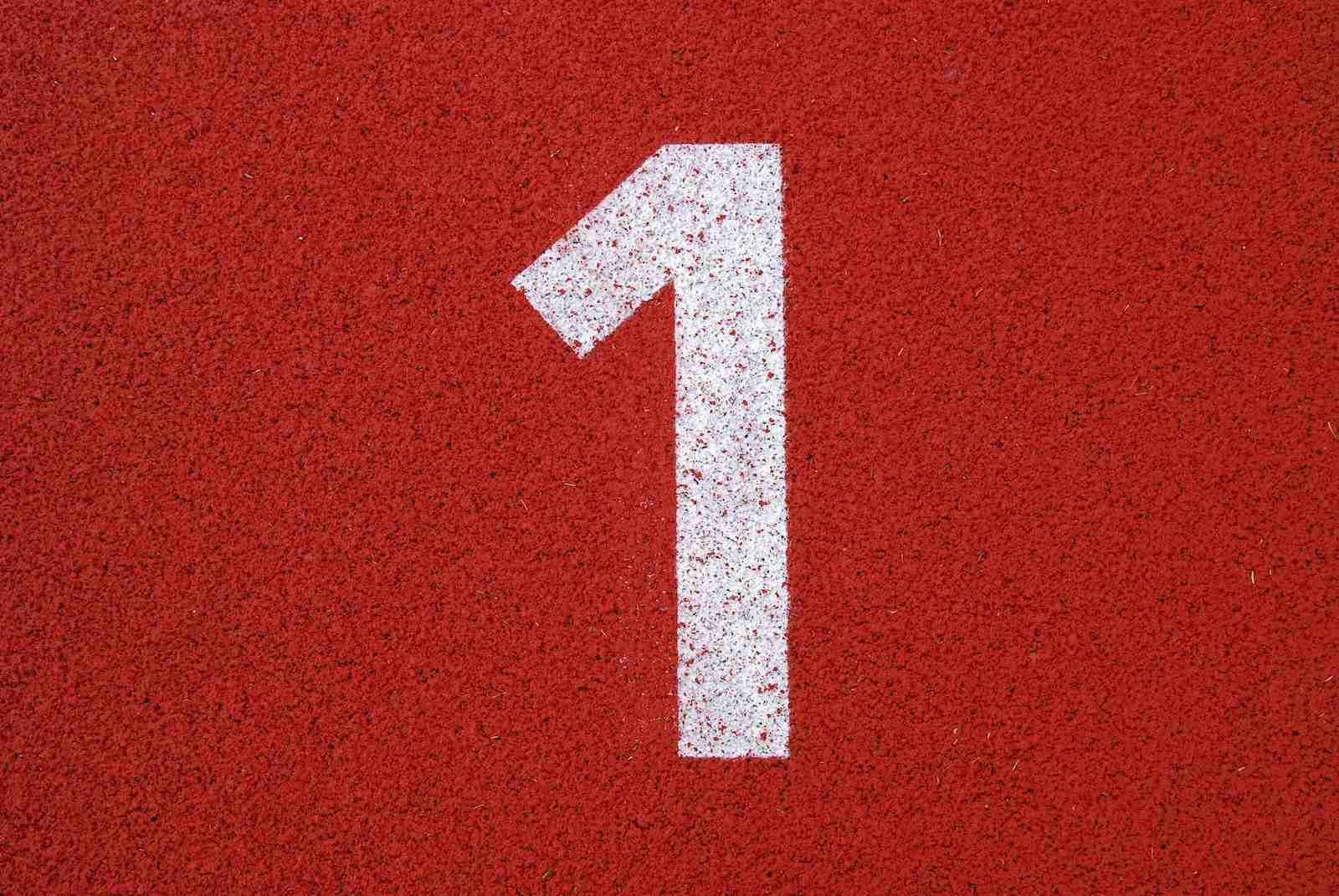23 Fun Facts About Number 1 You Need to Know
1. One is the first positive whole number in the natural numbers.
One is the starting point of the natural numbers and is the first positive whole number, leading to fun facts about Number 1. It is also the smallest whole number and cannot be made by adding any other natural numbers.
As the first natural number, one plays a significant role in many areas of mathematics, such as counting, addition, and multiplication.
2. The number 1 symbol “1” is derived from the Hindu-Arabic numeral system.
The symbol “1” that we use today is derived from the Hindu-Arabic numeral system, which mathematicians in India developed and later adopted by Arab scholars.
This system uses ten digits, including one, and a place-value notation, allowing efficient arithmetic operations. The symbol “1” was initially written as a single vertical stroke and evolved into its current form over time.
3. One is the multiplicative identity element in mathematics.

Identity in Math.
This means that any number multiplied by one equals itself. This property is fundamental in arithmetic and algebra and is used extensively in many areas of mathematics and science.
The multiplicative identity element is also essential in group theory, which studies symmetries and transformations.
4. One is the only number that is neither prime nor composite.
A prime number is a positive integer greater than one that has no positive divisors other than one and itself. A composite number, on the other hand, is a positive integer that has at least one positive divisor other than one and itself.
Since one has only one positive divisor (itself), it cannot be a composite number, and since it is not greater than one, it cannot be a prime number.
5. The number one is used to represent unity and singularity.
It symbolizes the idea of being whole and complete, and it is often associated with concepts such as the beginning, the first, and the only. In many cultures and religions, one represents a single divine force or a higher power.
In music, one is used to indicate the first beat of a measure, and it is often used to create a sense of rhythm and unity.
6. One is the atomic number of hydrogen, the most abundant element in the universe.
This means that a hydrogen atom has one proton in its nucleus, making it the simplest and lightest element. Hydrogen is essential for life as it plays a crucial role in many chemical reactions, such as photosynthesis and respiration.
7. In astrology, the planet associated with the number one is the sun.
This is because the sun is the center of our solar system, representing vitality, creativity, and self-expression. People born under the sign of Leo, which is ruled by the sun, are said to be confident, charismatic, and natural leaders.
8. In linguistics, the concept of “one” is used to distinguish singular from plural.

Singular vs. Plural.
The singular form refers to a single entity, while the plural form refers to more than one entity and fun facts about Number 1. This distinction is fundamental in many languages and is used to convey important information about the number and quantity of objects, people, or ideas being referred to.
9. In the military, a “one-star general” ranks above a colonel and below a two-star general.
This rank is also known as brigadier general and is typically given to officers with extensive experience and expertise in their field. One-star generals are responsible for leading and managing various military operations and play a critical role in the chain of command.
10. One is the smallest positive integer that cannot be expressed as the sum of any two or more composite numbers.
This property is known as being “non-composite” or “prime.” Because one is not prime, some mathematicians consider it a separate category, known as the “unit” or “identity element.”
11. The number one is often used to signify a starting point or origin, as in “day one” or “year one.”
The number one is often used to signify a starting point or origin in various contexts, such as the beginning of a project, the start of a new era, or the birth of a child.
This usage reflects the idea that one represents the first and most fundamental unit of measurement, upon which all other numbers are based.
12. A monochrome painting with a single color is often called a “monochrome one.”
A monochrome painting that uses a single color, often shades of gray, is called a “monochrome one.” This technique is used to create a sense of depth and texture despite the lack of color variation.
Some famous examples of monochrome paintings include Kazimir Malevich’s “Black Square” and Ad Reinhardt’s “Abstract Painting No. 5.”
13. In typography, the letter “I” is often referred to as a “capital one.”
Capital One refers to “I” because of its resemblance to the number one. This is especially true in certain fonts, such as Helvetica or Arial, where the uppercase “I” is simply a vertical line with two horizontal bars on top and bottom.
14. One is the number of elements in a singleton set.
This is a mathematical set that contains only one member. Singleton sets are often used in mathematics and computer science to represent individual objects or variables, and they play an important role in set theory and other branches of mathematics.
15. In linguistics, the term “one-time pad” refers to a type of encryption key that is used only once.
In linguistics, a “one-time pad” is a type of encryption method that uses a random key that is used only once for a single message. This key is as long as the message is kept secret between the sender and receiver to prevent interception and decryption by unauthorized parties.
This technique is considered one of the most secure encryption methods but is also cumbersome.
16. The number one is the basis of the decimal system.

This system is used in most countries worldwide for counting, arithmetic, measurements, and fun facts about Number 1. Each digit in a decimal number represents a power of ten, starting with the one’s place, and each place value is ten times greater than the one before it.
17. One is the number of dots on a standard six-sided die.
This is used in many games of chance and gambling. The other numbers on the die range from two to six, and they are arranged in such a way that the sum of any two opposite faces is seven.
This property ensures that the die is fair and unbiased and is used in many mathematical and statistical applications.
18. The number one is used to denote a primary or essential item or concept.
The phrase “number one priority” indicates the most important task or objective, while “the one and only” refers to a unique and irreplaceable item or person. In music, the term “number one hit” refers to a song that reaches the top position on the charts, indicating its widespread popularity and success.
Similarly, in sports, the player who holds the top ranking or position is often referred to as “number one,” emphasizing their dominance and skill.
19. what does the number 1 mean?
The number 1 is the smallest positive integer representing unity and singularity in mathematics. It symbolizes independence, creativity, and leadership in many cultures and is often associated with new beginnings.
“one” distinguishes singular from plural in language and often denotes a primary or essential item or concept.
20. In computer programming, Boolean values are often represented as 1 for true and 0 for false.

In computer programming, the number one is often used to represent a true value, while zero represents false. This convention is called the Boolean system and is widely used in coding.
21. In music, a “number one hit” refers to a song that reaches the top of the charts.
It is the most popular or best-selling song during a certain period, making achieving a number-one hit a significant milestone for artists and record labels in the music world.
22. The Soviet Union’s Luna 1 was the first spacecraft to reach the vicinity of the Moon.
1959 the Soviet Union’s Luna 1 was the first spacecraft to get close to the Moon. It didn’t land, but it passed near the Moon.
This mission was a big moment in space history. It showed that humans could send objects far into space, beyond Earth.
23. Karl Benz built the first automobile in 1885, a pioneering event in automotive history.
Karl Benz built the first car with its own engine in 1885. This car didn’t need horses to move. It was a very important invention.
It started the era of cars, changing how people travel and move things around the world.
FAQs
The factorial of 1 is 1.
There are many trivia and fun facts about the number 1. For example, the letter “I” is often referred to as a “capital one” in typography, and the number 1 is the only number that is not a prime number or a composite number.
Some unique facts about the number 1 include that it is the first positive whole number and the multiplicative identity element in math. It is also used to distinguish singular from plural in linguistics and represents unity and singularity in mathematics.
In math, 1 has a variety of meanings depending on the context. It represents the multiplicative identity, meaning any number multiplied by 1 is equal to itself. It is also used as the base unit in binary code and is the first number in the natural number sequence.
The first number system used by humans is believed to be the Babylonian number system, which dates back to around 2000 BC. There were many other ancient number systems developed around the same time in different parts of the world.







